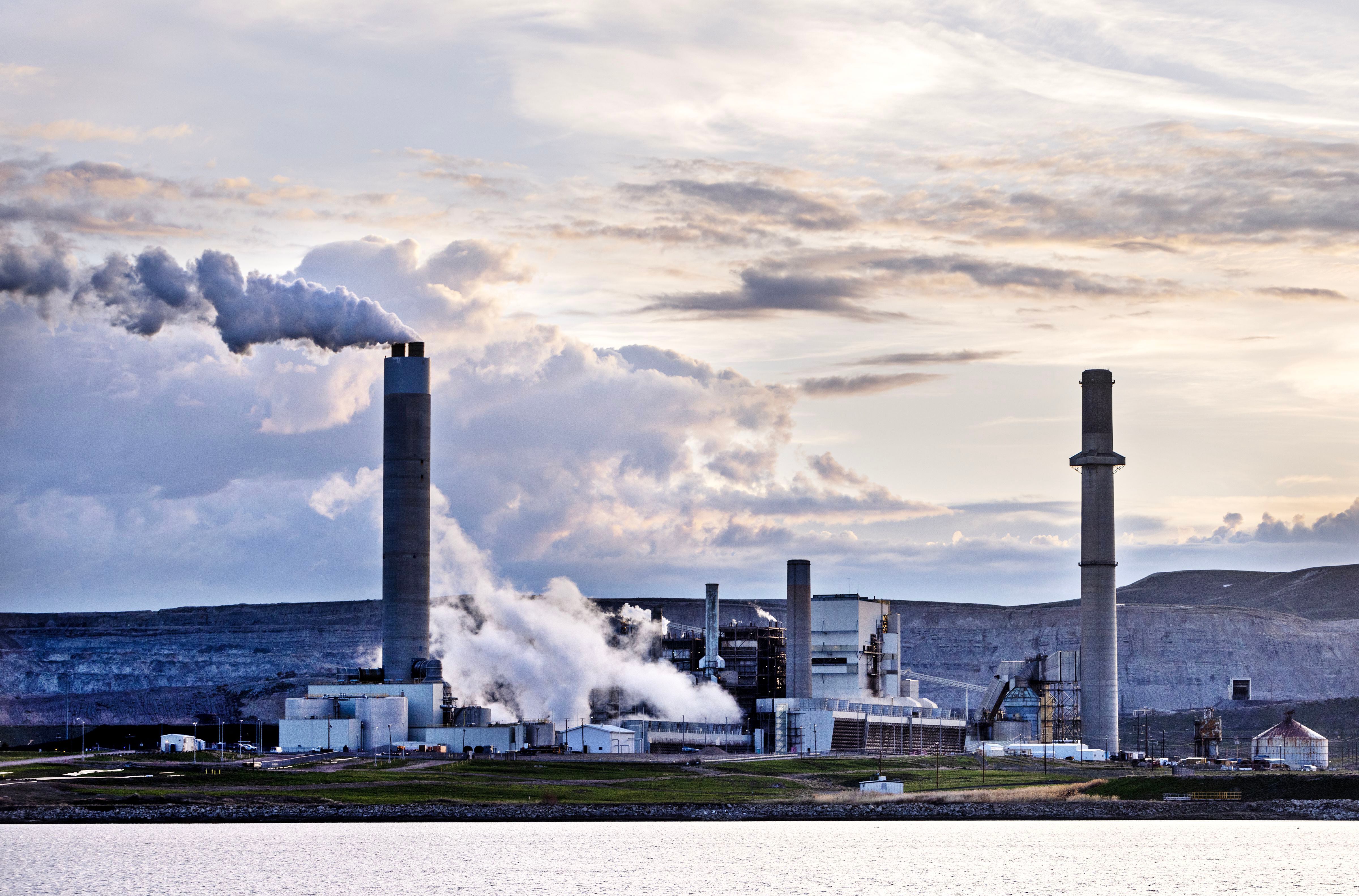The Biden administration on Thursday placed the final cornerstone of its plan to tackle climate change: a regulation that would force the nation’s coal-fired power plants to virtually eliminate the planet-warming pollution they release into the air or shut down.
The regulation from the Environmental Protection Agency requires coal plants in the United States to reduce 90% of their greenhouse pollution by 2039, one year earlier than the agency had initially proposed. The compressed timeline was welcomed by climate activists but condemned by coal executives who said the new standards would be impossible to meet.
The EPA also imposed three additional regulations on coal-burning power plants, including stricter limits on emissions of mercury, a neurotoxin linked to developmental damage in children, from plants that burn lignite coal, the lowest grade of coal. The rules also more tightly restrict the seepage of toxic ash from coal plants into water supplies and limit the discharge of wastewater from coal plants.
Taken together, the regulations could deliver a death blow in the United States to coal, the fuel that powered the country for much of the last century but has caused global environmental damage. When burned, coal emits more carbon dioxide than any other fuel source.
The new rules regarding power plants come weeks after the administration’s other major climate regulations to limit emissions from cars and large trucks in a way that is designed to speed the adoption of electric vehicles. Transportation and electric power are the two largest sources in the United States of the carbon pollution that is driving climate change.
President Joe Biden wants to cut that pollution about 50% from 2005 levels by the end of this decade, and to eliminate emissions from the power sector by 2035.
The coal industry in the United States has been on a precipitous decline for over a decade, as environmental regulations and a boom in natural gas, wind and solar power have made it more expensive to burn coal, and power generation has shifted toward those cheaper, cleaner sources of electricity. In 2023, coal-fired power plants generated 16.2% of the nation’s electricity, according to the U.S. Energy Information Agency, down from a peak of 52% in 1990. There are about 200 coal-burning power plants still operating, with many concentrated in Pennsylvania, Texas and Indiana.

There are only a few ways to eliminate emissions from power plants that burn coal. The chief manner is carbon capture and sequestration, a process that traps emissions from a smokestack before they reach the atmosphere and then stores them. That technology is extremely expensive and not fully deployed at any American coal plant. Some researchers are exploring other technologies, such as converting coal plants to run on ammonia. But none of those have been widely implemented.
The limits on power plant emissions announced Thursday would also apply to future facilities that burn gas, requiring them to capture their emissions or to use a fuel that is nonpolluting. Gas-fired power plants that are currently in operation would be exempt.
“Today, EPA is proud to make good on the Biden-Harris administration’s vision to tackle climate change and to protect all communities from pollution in our air, water and in our neighborhoods,” said Michael Regan, the EPA administrator. “By developing these standards in a clear, transparent, inclusive manner, EPA is cutting pollution while ensuring that power companies can make smart investments and continue to deliver reliable electricity for all Americans.”
Manish Bapna, the president of the Natural Resources Defense Council, an advocacy group, declared that “the age of unbridled climate pollution from power plants is finally over.”
The EPA estimates that the rule controlling greenhouse gases from power plants would eliminate 1.38 billion metric tons of carbon dioxide between now and 2047, which is equivalent to preventing the annual emissions from 328 million gasoline-powered cars.
The agency estimates that the rule would cost industries $19 billion to comply between now and 2047, but says the economic benefits during the same time period would be far greater. By stopping pollution from reaching the atmosphere, the regulation would help prevent $270 billion in damage to the economy from floods, wildfires, droughts, supply chain disruptions and increased commodity costs linked to climate change, the EPA said.
The EPA expects the regulation would also prevent other pollutants, such as soot, from escaping into the air, resulting in $120 billion in public health benefits between now and 2047. In 2035 alone, the agency projects that the rule will prevent up to 1,200 premature deaths, 870 hospital and emergency room visits, 360,000 asthma attacks, 48,000 school absence days and 57,000 lost workdays.
“Today is a good day for public health, particularly kids’ health,” said Harold Wimmer, president and CEO of the American Lung Association.
Republicans, electric utilities and the coal industry are likely to challenge the regulations. They argue they would decimate jobs, increase blackouts and drive up electricity costs.
“We think it’s completely unrealistic,” said Michelle Bloodworth, the president and CEO of America’s Power, a coal industry trade group.

There are about 42,000 jobs linked directly to coal mining today, down from about 73,000 a decade ago, according to the U.S. Bureau of Labor Statistics.
“This barrage of new EPA rules ignores our nation’s ongoing electric reliability challenges and is the wrong approach at a critical time for our nation’s energy future,” said Jim Matheson, CEO of the National Rural Electric Cooperative Association, which supplies electricity to many of the nation’s rural and suburban communities. “It undermines electric reliability and poses grave consequences for an already stressed electric grid.”
Former President Donald Trump, who is campaigning to return to the White House, has said he would overturn the regulation if he defeats Biden in November.
“I will cancel Biden’s power plant rule,” Trump said in a video address on his campaign website, adding that wind and solar energy “doesn’t work” because they are subsidized. That claim is false; fossil fuels receive billions of dollars annually in federal subsidies and wind and solar generate electricity more cheaply than oil, gas or coal even without extra financial help.
Under the plan, coal plants that are slated to operate through or beyond 2039 must reduce their greenhouse emissions 90% by 2032. Plants that are scheduled to close by 2039 would have to reduce their emissions 16% by 2030. Plants that retire before 2032 would not be subject to the rules.
The aging nature of the country’s existing coal plants means that many of the facilities could shut down before they would have to meet the most stringent limits. More than 200 coal plants have closed in the past decade, putting the average age of surviving plants at almost 50. The life span of an American coal plant is about 60 years, according to the U.S. Energy Information Administration, and roughly one-quarter of the existing 200 plants are already slated to retire within the next five years.
function onSignUp() { const token = grecaptcha.getResponse(); if (!token) { alert("Please verify the reCAPTCHA!"); } else { axios .post( "https://8c0ug47jei.execute-api.us-east-1.amazonaws.com/dev/newsletter/checkCaptcha", { token, env: "PROD", } ) .then(({ data: { message } }) => { console.log(message); if (message === "Human



























